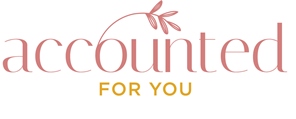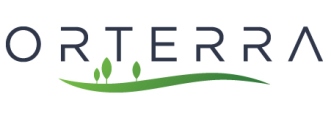
Did you know that the number one predictor of length of employment is the quality (or lack thereof) of the onboarding experience?
That’s right: research tells us that the better the onboarding, the greater term of employment. Of course, the converse is also in place. When someone has an onboarding experience that’s meh at best and shoddy at worst, they won’t be hanging around the organisation for very long. The recruitment merry-go-round continues, costing big in both time and effort, not to mention that line item on the Profit and Loss statement.
Good onboarding is just one part of the picture in attracting and retaining people in an employment environment where staying in a role for 10-20 years is now almost unheard of. While the world of work has changed, what I’ve noticed in my 25+ years of Human Resources (HR) is that the way this vital role is viewed or treated hasn’t changed. In some organisations, HR is seen almost as an afterthought, brought in when the you-know-what hits the fan. Yes, we’re all aware of the stereotypical view of HR as the fun police (thanks The Office!) but what’s missing is an acknowledgement that with a solid, stable scaffolding in workplaces people are enabled to perform. When people work in a company with great HR practices they simply feel valued. It’s as basic as that. In terms of recruitment and retention, this means that when someone is approached on LinkedIn they don’t even really consider having a chat with a recruiter or referral. Their response is a resounding ‘thanks but no thanks, I really love my role and the company I work for.’
The interesting thing here is it’s rarely about the dollars and cents. It’s the small things that make a difference. We know that competitive pay and incentives are expected and should really come as standard.
So, what are some strategies and initiatives that fall into the realm of attracting and retaining wonderful talent?
Obviously, the power of a good onboard can’t be underestimated. As I said at the top of this piece, studies tell us this is a significant factor in longevity of employment. However, there’s a step before this which is a smidge less tangible but equally important in attracting and retaining people, and that’s a super-clear vision, both in terms of clarity of a role but also the vision of the organisation. It’s this overarching vision that the new starter is going to be working towards within their role, after all. For this reason, it’s critically important to keep existing employees up to speed with movement across the organisation. Despite the proliferation of surprise parties and gender reveals across social media, on the whole, but especially at work, people rarely like a surprise or feeling like they’re the last to know. Communicate when people are starting and when people are leaving as a baseline.
Good onboarding is multifaceted but is basically about communication. As a human resources practitioner I’m actually a fan of over-communicating. Welcome people via email, share their photo so their new colleagues know who they are. Buddy systems are a great way to get someone feeling like they’re ‘home’ at the organisation. I set up a strategy for a client where we created open Slack channels that were basically the water cooler of days gone by, where new people could be made to feel welcome in a more casual format. It’s also important to set expectations and clarify preferences from the beginning. What’s the best way for someone to let the company know that they’re sick or need some flexibility? Who in the company do they let know? Is it their direct manager?
A side note – clarifying these expectations apply to everyone. We all have different preferences for how to be contacted (messenger, emails, voice messages, phone, etc) and when.
A huge part of my work with companies is assessing what they’re doing now against best practice as well as their broader business goals and Key Performance Indicators. One of my red flags is a lack of choice, where people are treated like surly teenagers rather than adults. For example, does your organisation really need a dress policy? If you hire to your values and culture, candidates and new starters will pick up what’s professional as well as what’s appropriate for the workplace.
New team member onboarded? Great, thank you, next! Not quite…
Check in over time, and intervene where and when you need to. This extends to feedback, which should also be regular. One of the things that raises my HR hackles is when I hear that feedback is a formal performance management process that happens just once a year. Instead, know how people like to receive feedback and how often, as well as the best way to convey feedback in a way that’s constructive for the individual rather than destructive! When communication is consistent, when there are manager check ins that are regular and informal, when efforts for group connection are commonplace, people feel part of the organisation. Culture, yeah?
Workplace culture is way beyond the bowls of chocolate and the drinks fridge. Yes, this might work for some people, but not for others. This is where knowing people really comes into play. Some people join an organisation because of the societal imprint and a chance to give back. I’ve worked with businesses to create volunteering options for people within their role where they spend a day a quarter at an organisation that’s meaningful to them and to the organisation, providing support in a way that’s equally meaningful, be it making sandwiches in a soup kitchen, packing up food hampers or creating care packages for people undergoing chemotherapy. This is essentially taking the company’s values off the wall and living them every day. When these are included in every movement through an organisation, from recruitment, onboarding, development, reward and recognition through to exiting, culture becomes embedded as people feel connected and aligned, to their work, to their colleagues and to the business.
Look, it’s really not that convoluted. It’s about recognising people’s effort and performance. Kudos boards are a highly effective and easily implemented way to show appreciation and recognition, again, in a tool like Slack.
It’s also about setting people up for success. At a basic level it’s giving them the tools they need to do their role, such as laptops and software to reduce complexity and it’s about removing or redacting the barriers and bureaucracy to perform. Yes, I’m talking about trust, accountability and a micro-managing-free zone! Instead, shoot for empowerment and creativity, freedom to add curiosity to problem solving, with guidance but not necessarily the answers.
Managers have a critical role in attracting and retaining staff. In fact, according to this article , a study found that 67% of employees leaving Google reported that their managers made no attempt to retain them before they gave notice. 67%! What a waste across all measures!
So, how can managers be supported to play their (vital) role? Well, investing in them is a good start. Give them the support, development and coaching to in turn provide empathy coaching and support for their team. Team tools like DiSC offer a means to understand the individuals within a team as well as the collective so managers have insights into how to get the best out of people, without putting them in (demotivating!) boxes.
Most importantly, when it comes to building a culture that attracts and retains incredible people, let’s go with a stop, collaborate and listen approach. And yes, I know you now have a little ditty in your head but alas… So many times, I’ve seen senior managers (and yes, HR) make decisions on employee programs and policies without actually involving or speaking to their people to understand what they really need or want! One size does not fit all!
For more information about how I work or how I could be of support, please reach out.

Related Articles
How to motivate people: aligning their attitudes with values
A values-led culture seems to be the holy grail of workplaces, for good reason. Like attracts like. People want to work in organisations that align...
Selective sourcing for success
It’s a candidate’s market where for the first time candidates hold the power. There’s a great resignation or a great reshuffle as people seek the...

HR strategies and tips to your inbox
Get the latest human resources tips and insights into your inbox. Sign up now to stay updated and receive practical advice tailored for both HR professionals and business owners to help your business thrive.
READY TO GET STARTED?
Start shaping the health and heart of your business today


CONNECT WITH US

CONNECT WITH US
Unscripted HR acknowledges the Traditional Custodians of Country throughout Australia and their ongoing connection to land, waters and community. We pay our respects to Elders, past and present.

Unscripted HR acknowledges the Traditional Custodians of Country throughout Australia and their ongoing connection to land, waters and community. We pay our respects to Elders, past and present.










